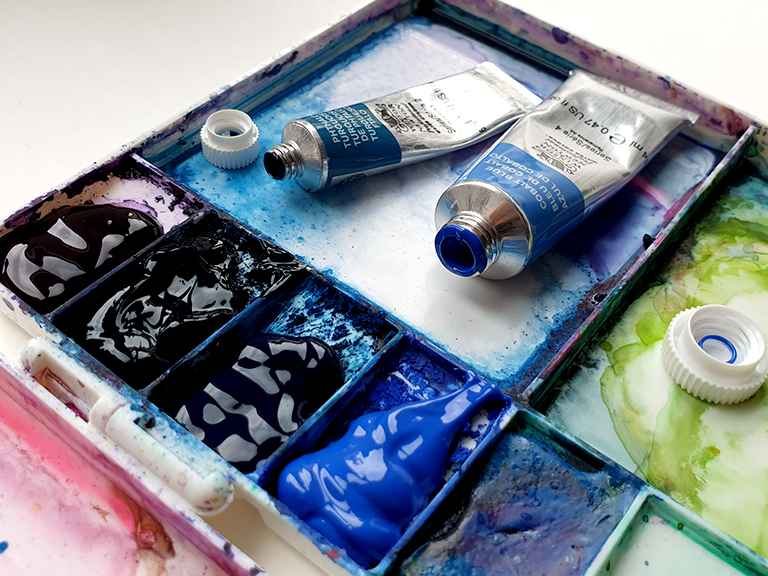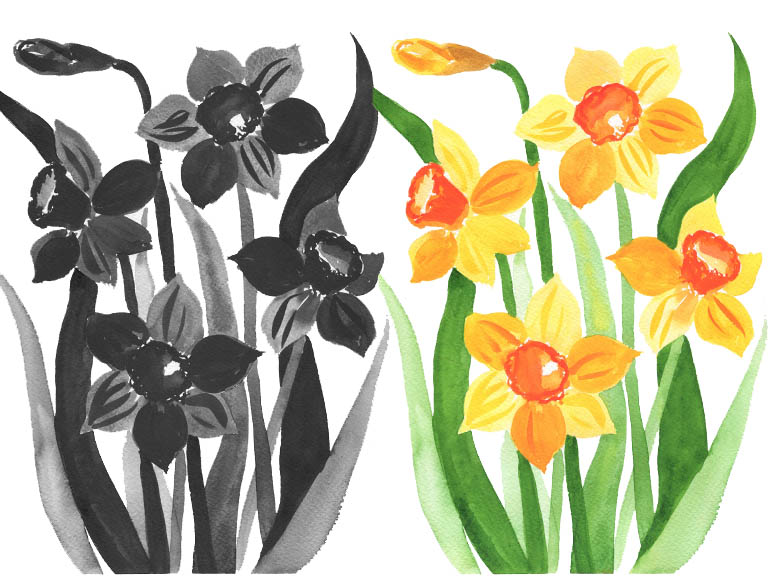Many watercolour beginners find themselves looking for a white paint. However, most paint sets don’t contain white and if you’ve seen my palette on Instagram, you’ll notice that I don’t have a white either.
This is down to personal preference, but many watercolour artists don’t paint with white watercolour. So how else do you get white in your painting?
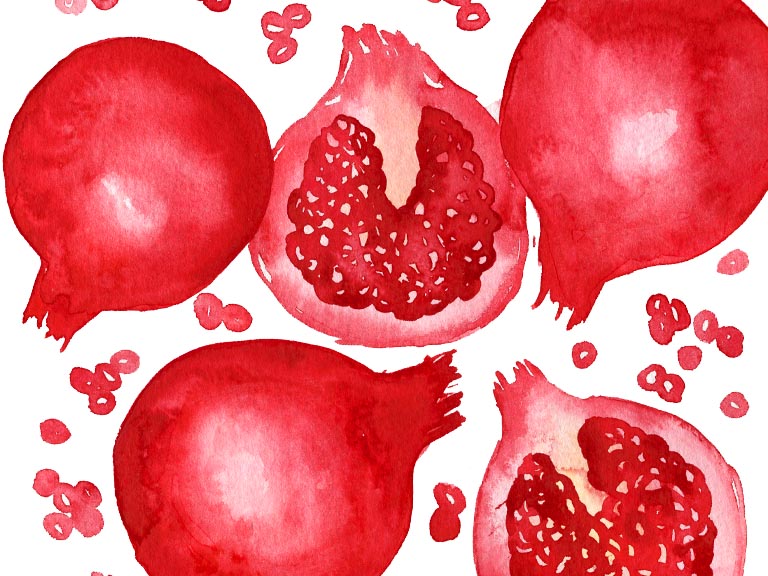
White space
Most watercolour artists make use of white space in paintings. This means leaving spaces on the paper that don’t have paint on them, so the white of the paper becomes the highlight. This requires careful planning of your painting, as you have to remember to avoid the areas you want to remain white so you don’t accidentally paint over them!
In the painting above, I used white space for the highlights in the fruits and pomegranate seeds!
Using white space is the most natural and effective method, and it’s easier than it sounds once you get the knack of it. The white of the watercolour paper is clear and brilliant, providing luminous highlights alongside the transparency of watercolour paint that makes the most of this magical medium. It’s precisely this luminosity that makes watercolour so beautiful
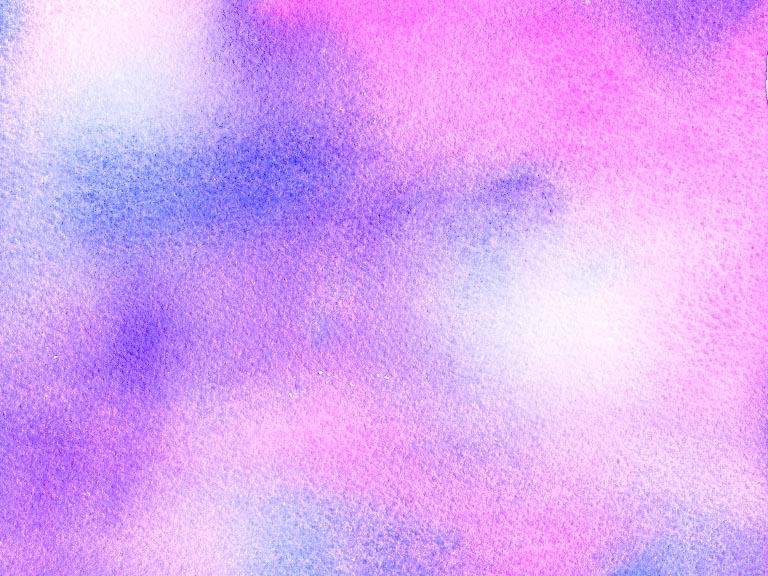
White watercolour paint
There are white watercolour paints you can buy, but they’re not common for two reasons. First, they can look a little chalky and dull when added to wet paint. Some artists use them to add clouds into skies for example, but they often look more grey than clear white.
And secondly, because watercolour paint is translucent, white watercolour can’t be layered over darker colours when they’re dry – the paint isn’t opaque enough. It essentially creates a faint grey tone, not a clear white highlight.
White watercolours are predominantly used to mix with other colours to create pastel tones – they’re great if you want to mix a range of candy colours. They make the colours opaque and chalkier, but many artists like this style and have a lot of fun with it.
As white watercolours are no good for layering highlights over the top of your finished painting, you can still use other mediums for this. Here are your options:
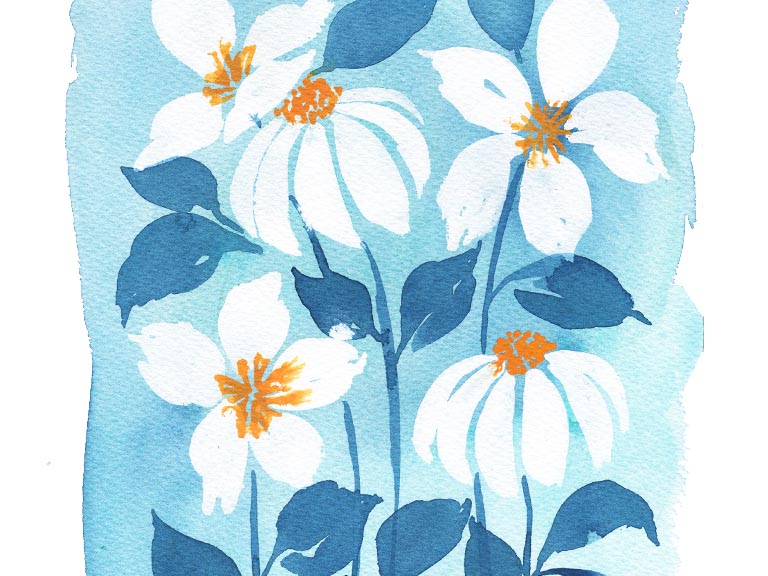
Bleedproof White
This is a thick, water-based white paint from Dr PH Martins, and popular with watercolour artists who want to add white details into their work. Bleedproof White can be layered over the top of dry watercolour or mixed in with other colours to create pastel tones and opaque colours.
If you do want to mix other mediums with your watercolour paints, it’s important you choose water-based mediums like Bleedproof White or gouache below. You can’t mix acrylics or oils into watercolour paint.
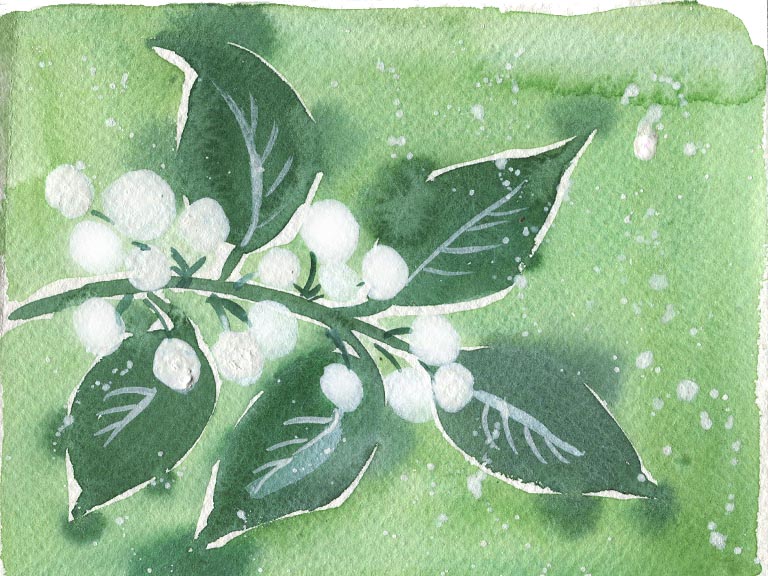
White gouache
Gouache is similar to watercolour, in that it’s water-based and can be thinned down by adding water. It’s creamy and opaque rather than translucent like watercolour, giving it a matte, chalky finish. This also makes it great for layering highlights. It’s thicker than Bleedproof White, having a texture like toothpaste on its own, but can be watered down easily enough.
White acrylic paint
You can also use a white acrylic paint for adding whites over a watercolour piece. However, there are things to consider. First, you can’t add more watercolour on top of acrylic – it has to be the final layer. And secondly, it often dries to a slightly shiny finish, which can look off especially if used in a larger area.
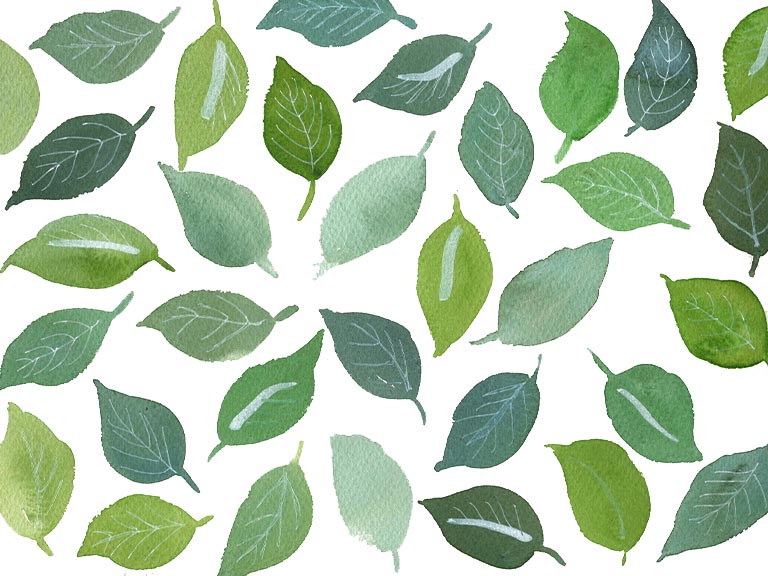
White gel pens
If you want fine white details, a good gel pen can be a good addition to your watercolour supplies. Gel pens are ideal for adding highlights on top of darker watercolour when it’s dry, and they come with a fine tip that’s easy to control. You can see these used as highlights in watercolour with the vein details in the leaves above.
Posca pens
Posca do a great range of acrylic paint pens, which can layer a thick white over the top. It’s an easy way to add a thin layer of acrylic, but with all the same caveats for acrylic as above. And since acrylic doesn’t mix with watercolour, these can only be used as highlights over the top of dried paint. The pens come in a range of sizes from fine nibs to stocky felt-tips.
It’s important to know that these whites are optional! You can absolutely paint without them and just use the white of the paper as the highlights.
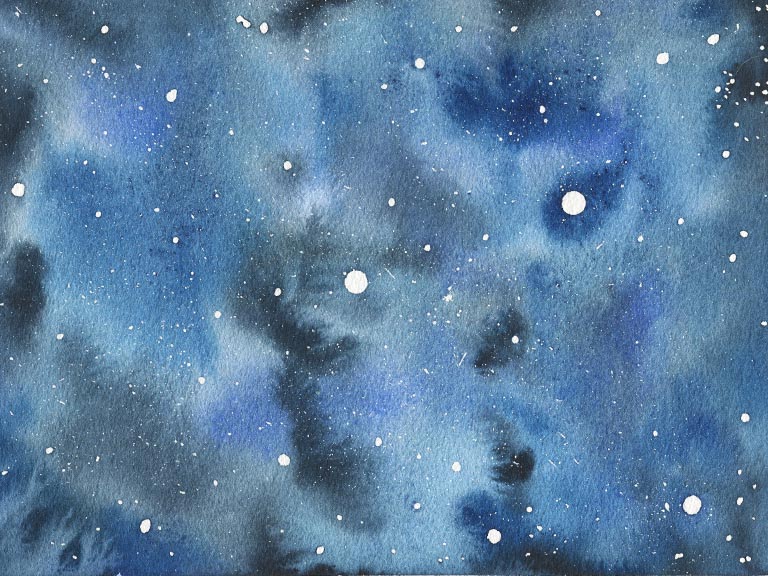
Masking fluid
When it comes to whites in watercolour, there’s one final tool every artist from beginner to professional should experiment with – masking fluid.
Masking fluid is a liquid latex that can be applied onto your watercolour paper. When it dries, it forms a protective barrier, preventing paint from touching that area and maintaining your white space. Simply paint over the top, let it all dry and rub the masking fluid to peel it off, revealing crisp white paper!
You can use masking fluid in lots of ways – marking out a moon in a dark night sky, or highlights in the eyes in a portrait. In the image above, I’ve used flicks of masking fluid to create the stars!
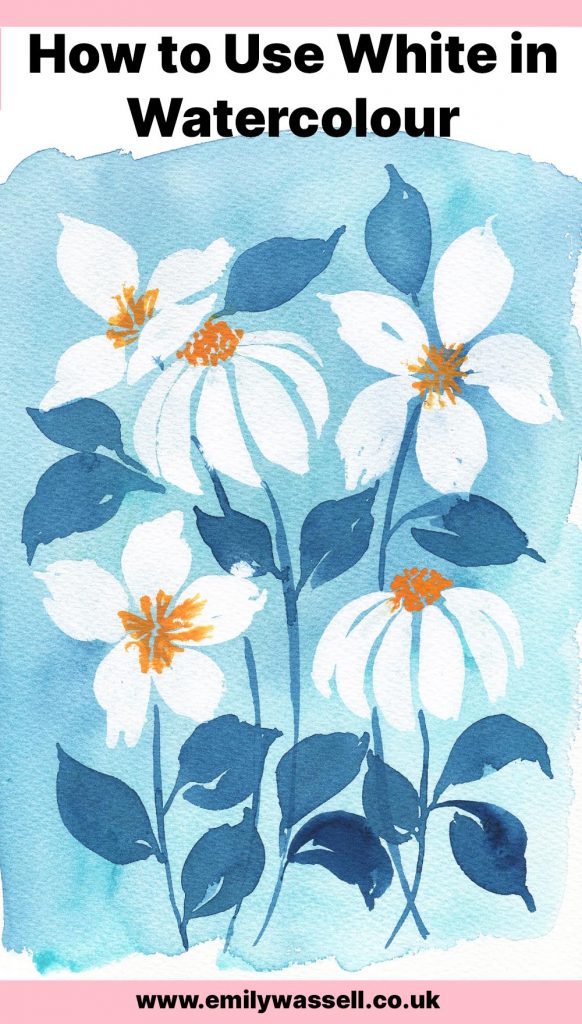
Now you’ve got plenty of ways to use whites in your watercolour painting – go forth and enjoy! If you want to know what supplies I use, download my free supply guide below.
Download my free watercolour supply guide
Feeling overwhelmed and confused by watercolour paints, papers and brushes? Download my free guide filled with insider info, including a list of good supplies for every budget, and my complete supply list!
